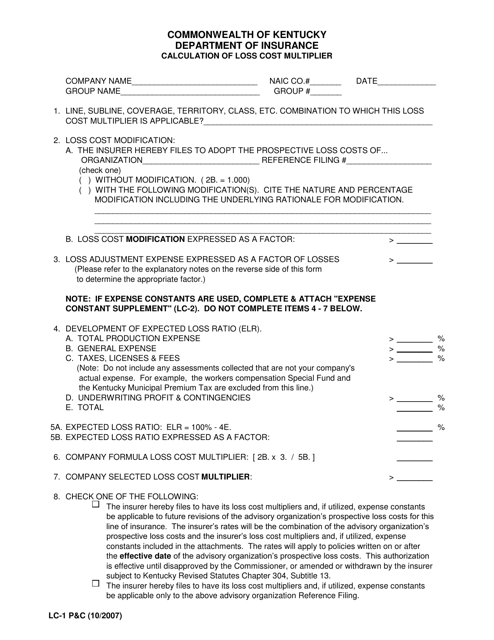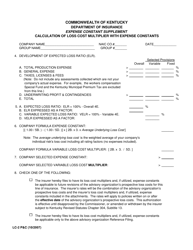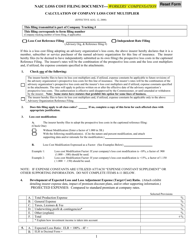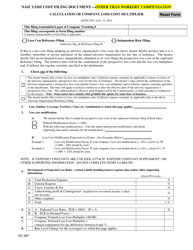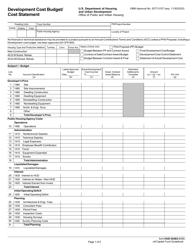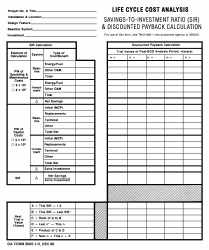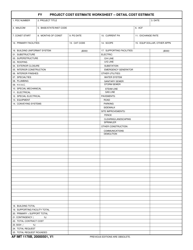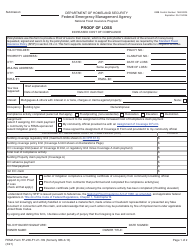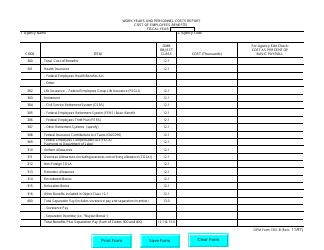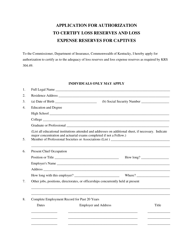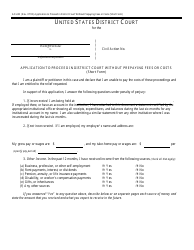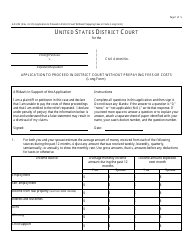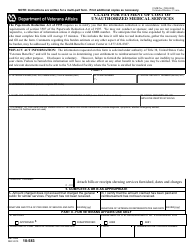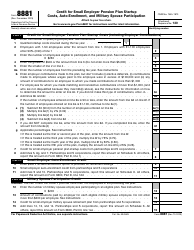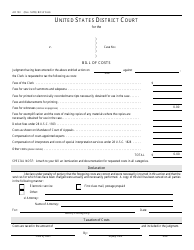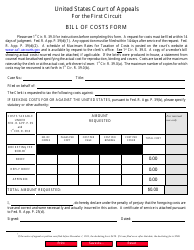Form LC-1 P&C Calculation of Loss Cost Multiplier - Kentucky
What Is Form LC-1 P&C?
This is a legal form that was released by the Kentucky Department of Insurance - a government authority operating within Kentucky. As of today, no separate filing guidelines for the form are provided by the issuing department.
FAQ
Q: What is Form LC-1?
A: Form LC-1 is a document used for calculating the Loss Cost Multiplier (LCM) in Kentucky.
Q: What is Loss Cost Multiplier (LCM)?
A: The Loss Cost Multiplier (LCM) is a factor used to adjust the loss costs provided by the advisory organization to reflect the expenses and profit of individual insurance companies.
Q: Why is the LCM important?
A: The LCM is important because it determines the final insurance rates that companies charge to policyholders.
Q: Who uses Form LC-1?
A: Insurance companies in Kentucky use Form LC-1 to calculate the LCM for different coverages.
Q: What information is needed to complete Form LC-1?
A: Form LC-1 requires information such as the company's direct written premium, loss adjustment expenses, and profit and contingency provision.
Q: How is the LCM calculated?
A: The LCM is calculated by dividing the total losses and expenses by the total direct written premiums.
Q: What does the LCM represent?
A: The LCM represents the ratio of losses and expenses to premiums.
Form Details:
- Released on October 1, 2007;
- The latest edition provided by the Kentucky Department of Insurance;
- Easy to use and ready to print;
- Quick to customize;
- Compatible with most PDF-viewing applications;
- Fill out the form in our online filing application.
Download a printable version of Form LC-1 P&C by clicking the link below or browse more documents and templates provided by the Kentucky Department of Insurance.
